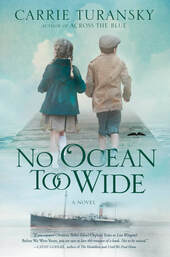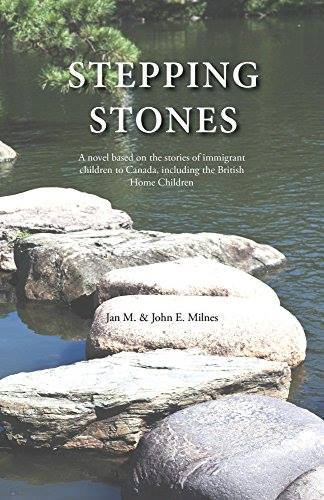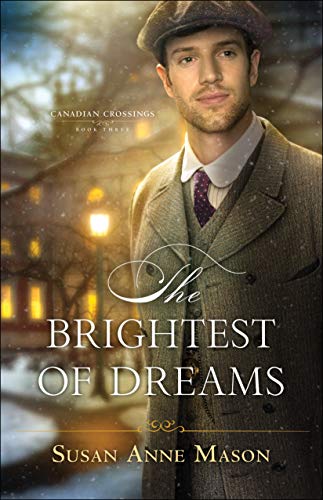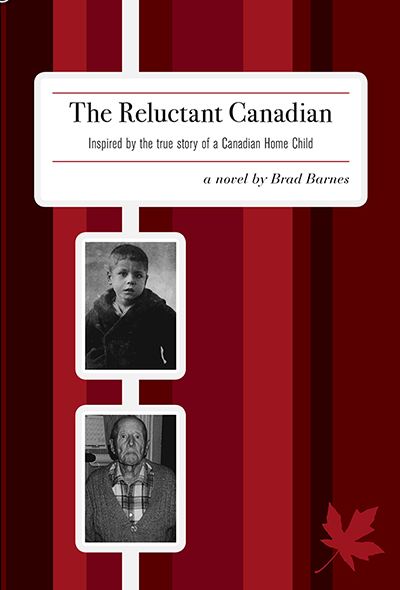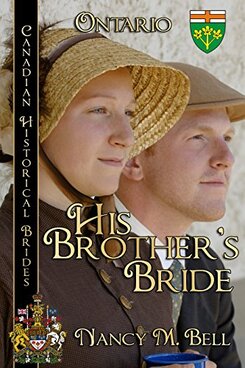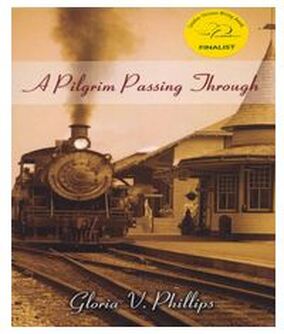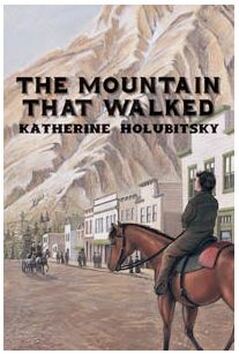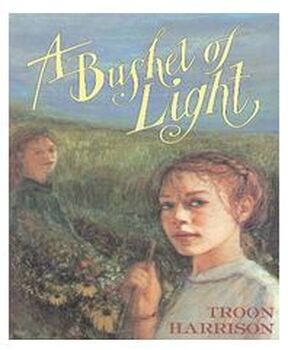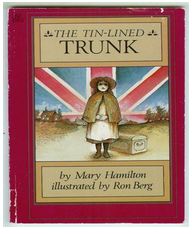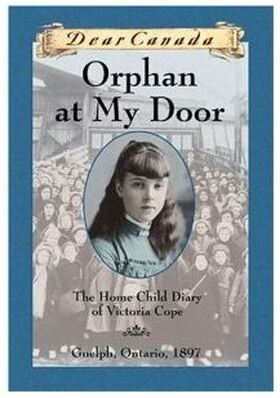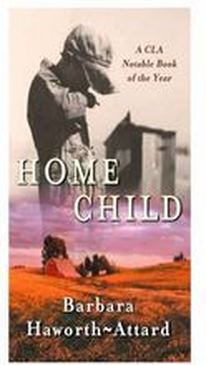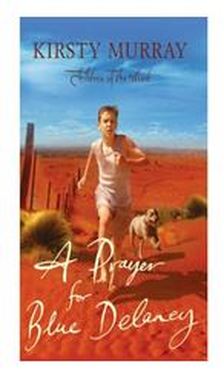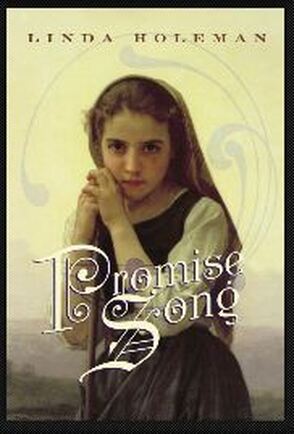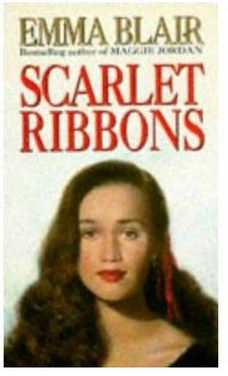|
After the tragic loss of their father, the McAlister family is living at the edge of the poorhouse in London in 1908, leaving their mother to scrape by for her three younger children, while oldest daughter, Laura, works on a large estate more than an hour away. When Edna McAlister falls gravely ill and is hospitalized, twins Katie and Garth and eight-year-old Grace are forced into an orphans' home before Laura is notified about her family's unfortunate turn of events in London. With hundreds of British children sent on ships to Canada, whether truly orphans or not, Laura knows she must act quickly. But finding her siblings and taking care of her family may cost her everything.
Andrew Fraser, a wealthy young British lawyer and heir to the estate where Laura is in service, discovers that this common practice of finding new homes for penniless children might not be all that it seems. Together Laura and Andrew form an unlikely partnership. Will they arrive in time? Will their friendship blossom into something more? Inspired by true events, this moving novel follows Laura as she seeks to reunite her family and her siblings who, in their darkest hours, must cling to the words from Isaiah: "Fear thou not; for I am with thee: be not dismayed; for I am thy God". |
|
With the emergence of the Industrial Revolution in Great Britain came increased riches for the wealthy and desperate poverty for the poor. The Industrial Revolution was, in fact, the creation of mass production of goods previously generated by cottage industries. Large numbers of rural people followed the job route becoming the new urban poor. As a result of many varied reasons hordes of children found themselves living on the streets of the cities. The British Government, in a valiant attempt to help these lost souls, entered into an agreement with the Canadian Government, resulting in large numbers of British children emigrating to Canada in the new world.
These were to become known as the British Home Children because they largely started out in a philanthropic home. Some even migrated through other means, as will be seen in the case of John Buchan, a significant character in this novel. The authors determined that the wealth of books presently available did not truly reflect the reality of the situation to which these children were subjected. Through this novel they hope to generate a greater interest in the children who were to play a large part in forming the demographic of an emerging nation. In Ontario alone 1 in 10 are believed to be descendants of these children. |
|
Quinten Aspinall is determined to fulfill a promise he made to his deceased father to keep his family together. To do so, he must travel to Canada to find his younger siblings, who were sent there as indentured workers while Quinn was away at war. He is also solicited by his employer to look for the man's niece who ran off with a Canadian soldier. If Quinn can bring Julia back, he will receive his own tenant farm, enabling him to provide a home for his ailing mother and siblings.
Julia Holloway's decision to come to Toronto has been met with disaster. When her uncle's employee rescues her from a bad situation, she fears she can never repay Quinn's kindness. So when he asks her to help find his sister, she agrees. Soon after, however, Julia receives some devastating news that changes everything. Torn between reuniting his family and protecting Julia, will Quinn have to sacrifice his chance at happiness to finally keep his promise? |
The Reluctant Canadian
|
|
The youngest child of the local doctor and evangelical preacher, Annie Baldwin was expected to work hard and not protest. Life on a pioneer farm was tough so neighbors helped each other. George Richardson the underage Doctor Bernardo Boy, orphaned and shipped to Canada a few years earlier, is loaned to the Baldwins to help bring in the hay. Younger brother Peter Richardson was placed with another neighbor, so the brothers stayed in touch with each other. The Great War brought a lot of changes to life even in the back woods of Ontario. In spite of the differences in their social standing, George and Annie fell in love. When George departed for France they had an understanding and he promised to return to her when the war was over. Like so many others, Annie waited and hoped, carrying on as best she could. Only time would tell if her dreams would come true. If you enjoyed the work of Rosie James you'll love His Brother's Bride.
|
A Pilgrim Passing Through
|
|
I'm not ten feet from the stoop when my foot runs aground on something unfamiliar and I stumble. I manage to keep my balance, but what's in the pot splashes into the snow. In the thin morning light, I stare at the snow and the yellow patch where the liquid is trickling into it. Something black lies beneath. I rub the spot with my foot. It's a boot—I recognize it as belonging to Albert Brooks.
|
The Moutain that Walked
|
Hopeless
Title: HopelessBookID: hopeless-ficAuthors: Michael StaplesISBN-10(13): N-O-N-EPublisher: Writers En BlocPublication date: Edition: 1stLanguage: EnglishPrice: $22.99 US
A British Home Child Novel is a tale based on the life of May Charrington, one of the estimated 100,000 British Home Children forcibly shipped to Canada from 1869 to 1939. Once they arrived in Canada, they often faced an existence laced with despair. For many, it was a life without hope. (356 pages)
A British Home Child Novel is a tale based on the life of May Charrington, one of the estimated 100,000 British Home Children forcibly shipped to Canada from 1869 to 1939. Once they arrived in Canada, they often faced an existence laced with despair. For many, it was a life without hope. (356 pages)
The home child
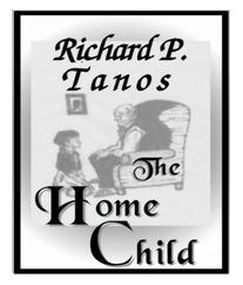
(From the author's website)This highly acclaimed and long awaited debut novel from Richard P. Tanos has been self-published through Trafford-on-demand Publishing, Victoria, British Columbia, Canada.
The Home Child tells the story of Henry Dewberry, a twelve-year-old orphan from London, England. Henry was one of a hundred thousand children who made that incredible ocean voyage to a so-called better place, called Canada. Blessed by a stroke of fate, Henry clumsily meets Lizzie, a local middle-class girl who lives in the town of Waterford, Ontario. Lizzie, along with her best friend Clara suddenly figure out what is taking place and both of them do everything possible to find out where Henry has been sent. This historical story is based on actual events and reflects life in South Western Ontario, Canada in 1907 -- called Canada West. A documented shameful period in Canadian history that was suppressed for years by all those that were involved in its execution. Canada and Australia, young nations trying hard and fast to grow up, engaged in an organized, lucrative child slave movement with mother England. This cruel and harsh immigrant trade continued for almost forty years, all the while being ignored by the world. The story reflects what life was like for young immigrant children, local children, and their strong will and desire to explore and be together. The unfortunate event at the end of the novel propels Henry from boyhood into an adult and changes his character forever. The Home Child is a story that embraces human tolerance, unthinkable harsh isolation, commitment, and the ultimate will to survive in this so-called better place called, Canada. Your heart will certainly be touched. Henry and Lizzie were my grandparents - Richard P. Tanos
The Home Child tells the story of Henry Dewberry, a twelve-year-old orphan from London, England. Henry was one of a hundred thousand children who made that incredible ocean voyage to a so-called better place, called Canada. Blessed by a stroke of fate, Henry clumsily meets Lizzie, a local middle-class girl who lives in the town of Waterford, Ontario. Lizzie, along with her best friend Clara suddenly figure out what is taking place and both of them do everything possible to find out where Henry has been sent. This historical story is based on actual events and reflects life in South Western Ontario, Canada in 1907 -- called Canada West. A documented shameful period in Canadian history that was suppressed for years by all those that were involved in its execution. Canada and Australia, young nations trying hard and fast to grow up, engaged in an organized, lucrative child slave movement with mother England. This cruel and harsh immigrant trade continued for almost forty years, all the while being ignored by the world. The story reflects what life was like for young immigrant children, local children, and their strong will and desire to explore and be together. The unfortunate event at the end of the novel propels Henry from boyhood into an adult and changes his character forever. The Home Child is a story that embraces human tolerance, unthinkable harsh isolation, commitment, and the ultimate will to survive in this so-called better place called, Canada. Your heart will certainly be touched. Henry and Lizzie were my grandparents - Richard P. Tanos
A Bushel of Light
Title: A Bushel of LightBookID: bushel-ficAuthors: Troon HarrisonISBN-10(13): 0773761403Publisher: Fitzhenry and WhitesidePublication date: September 1, 2000Edition: 1stLanguage: EnglishPrice: Varies
Maggie is a "Home Child", an orphan who works for a family in return for her keep. She is abused and unloved, yet her dearest wish is to stop dreaming about the girl in the glass, the one who looks just like her. Haunted by the memory of the terrible day when she was torn from her twin sister, she wonders why her aunt sent her away, but kept her twin. Filled with heartbreak, yet full of hope, A Bushel of Light is a glimpse at the difficulties faced by Barnardo Children, the thousands of English orphans sent across the commonwealth at the turn of the century. Some fared well, but many faced hard labor and were treated as little more than slaves by those who were meant to protect them. |
The Tin-Lined Trunk
Title: The Tin-Lined TrunkBookID: tinlined-ficAuthors: Mary HamiltonISBN-10(13): 0919964281Publisher: Kids Can PressPublication date: June 30, 1980Edition: 1stLanguage: EnglishPrice: Varies
Polly Dipple and her brother Jack, two London street urchins, are rescued from hunger and cold by Dr. Barnardo, founder of the Barnardo Homes for destitute children. Jack is shipped off to Canada to work as a farm labourer, while Polly remains in England to train as a domestic servant. Eventually, Polly joins Jack in Toronto and the two of them are placed on neighbouring farms. Badly mistreated by his employers, Jack runs away, but finally the two children are reunited and live and work happily with a farm couple who accept them as part of the family. |
Orphan at My Door: The Home Child Diary of Victoria Cope
Title: Orphan at My Door: The Home Child Diary of Victoria CopeBookID: orphandoor-ficAuthors: Jean LittleISBN-10(13): 0439988349Publisher: Scholastic Canada, LimitedPublication date: 2001Edition: 2ndLanguage: EnglishPrice: Varies
Victoria’s mother is unwell, so her father decides to get a Home Child — an orphan from England — to help out with the family chores. Soon after, a quiet young girl named Mary Anna joins their household. Victoria soon discovers the reason for Mary Anna’s silence — she was separated from her younger brother, Jasper, soon after their arrival in Canada. Victoria vows to help Mary Anna find her brother, so they can be a family once again. Beloved author Jean Little brings to light the moving experiences of the Home children who came to Canada at the turn of the century. Readers everywhere will identify with Mary Anna’s plight, and Victoria’s mission to reunite her with her family. Vetted by a historical expert, this book contains two historical maps, twelve period illustrations/documents, and an extensive historical note. |
Homechild
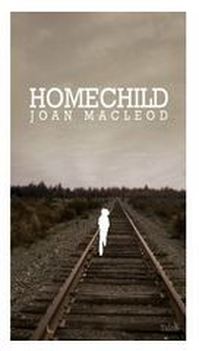
Title: HomechildBookID: homechild2-ficAuthors: Joan MacLeodISBN-10(13): 0889225826Publisher: TalonbooksPublication date: May 15, 2008Edition: 1stLanguage: EnglishPrice: $13.22 US
In 1922, Katie and Jackie are wed to an ignominious history, the officially sanctioned migration of children from Briton to Canada, over eighty-thousand children displaced between 1860 and 1930. Often separated from parents and siblings for years- if not permanently- such unfortunates are transported to Canadian factories and farms, virtually indentured servants. In the first scene, we meet six-year-old Katie, alone, waiting for her brother to send word of his arrival in Canada, believing that if she is patient enough he will come back for her. In present day, Alistair, in his eighties, inhabits a dilapidated Canadian farm house that has seen better days, cared for by his sister-in-law, Flora, since his wife's death ten years earlier. Alistair hasn't shared his early trauma with his family, refuses to speak about the past. Only next-door neighbor, Dorrie, knows of the pain they endured, herself a victim of the same migration of children.
Other characters round out our perspective: Alistair's children, Ewan and Leona, his daughter currently visiting from Toronto; and Dorrie's son, Wesley, Lorna's former school-mate. It is clear that Lorna is uncomfortable returning to her home and her father's influence, a taciturn man who shows no overt affection for his children, who in turn expect little from him. A loose-knit family reunion has been organized for Lorna's homecoming, family members settling into their natural roles as the play progresses: Lorna, a daughter who finds she can't go home again, stung by her father's harsh judgments; Flora, trying to make peace while subtly controlling the course of events' and Dorrie, ever-tentative since her arrival in Canada as a child, lovingly supported by her twice-divorced, live-in son, Wesley. From the life-altering migration of 1922 to the present, the family has never addressed the fractures that have plagued them, the details of Alistair's past shared with no one.
In the final scene, time comes full circle thanks to Lorna and Wesley's exertions on Alistair's behalf, the two determined to locate Katie all these years later. Alistair's stroke is key to unraveling the story, his defenses breached as he unconsciously reveals critical details of his history. Worrying over the old man's health, each character treads unfamiliar territory, unsure what his reaction will be to the success of their search. Within this simple framework of family and friends, the author assembles an emotional bridge from past to present, unearthing hurts long-buried, almost too painful to be exposed. The history of these children- chattels, really- is tragic, their futures scarred indelibly by circumstances out of their control. The ethereal Katie exists is stasis; it is hard to imagine what the years might have wrought. The final scene is heartbreaking, a poignant resurrection of the past finally joined with a shameful history of loss and abandonment, siblings reunited. (Review by Luan Gaines/ 2008.)
In 1922, Katie and Jackie are wed to an ignominious history, the officially sanctioned migration of children from Briton to Canada, over eighty-thousand children displaced between 1860 and 1930. Often separated from parents and siblings for years- if not permanently- such unfortunates are transported to Canadian factories and farms, virtually indentured servants. In the first scene, we meet six-year-old Katie, alone, waiting for her brother to send word of his arrival in Canada, believing that if she is patient enough he will come back for her. In present day, Alistair, in his eighties, inhabits a dilapidated Canadian farm house that has seen better days, cared for by his sister-in-law, Flora, since his wife's death ten years earlier. Alistair hasn't shared his early trauma with his family, refuses to speak about the past. Only next-door neighbor, Dorrie, knows of the pain they endured, herself a victim of the same migration of children.
Other characters round out our perspective: Alistair's children, Ewan and Leona, his daughter currently visiting from Toronto; and Dorrie's son, Wesley, Lorna's former school-mate. It is clear that Lorna is uncomfortable returning to her home and her father's influence, a taciturn man who shows no overt affection for his children, who in turn expect little from him. A loose-knit family reunion has been organized for Lorna's homecoming, family members settling into their natural roles as the play progresses: Lorna, a daughter who finds she can't go home again, stung by her father's harsh judgments; Flora, trying to make peace while subtly controlling the course of events' and Dorrie, ever-tentative since her arrival in Canada as a child, lovingly supported by her twice-divorced, live-in son, Wesley. From the life-altering migration of 1922 to the present, the family has never addressed the fractures that have plagued them, the details of Alistair's past shared with no one.
In the final scene, time comes full circle thanks to Lorna and Wesley's exertions on Alistair's behalf, the two determined to locate Katie all these years later. Alistair's stroke is key to unraveling the story, his defenses breached as he unconsciously reveals critical details of his history. Worrying over the old man's health, each character treads unfamiliar territory, unsure what his reaction will be to the success of their search. Within this simple framework of family and friends, the author assembles an emotional bridge from past to present, unearthing hurts long-buried, almost too painful to be exposed. The history of these children- chattels, really- is tragic, their futures scarred indelibly by circumstances out of their control. The ethereal Katie exists is stasis; it is hard to imagine what the years might have wrought. The final scene is heartbreaking, a poignant resurrection of the past finally joined with a shameful history of loss and abandonment, siblings reunited. (Review by Luan Gaines/ 2008.)
|
Author's web site:
http://www.barbarahaworthattard.com/book-list/home-child
|
Home Child
Title: Home ChildBookID: homechild1-ficAuthors: Barbara Haworth-AttardISBN-10(13): 0006393128Publisher: HarperCollins Publishers Canada, LimitedPublication date: 2003Edition: 1stLanguage: EnglishPrice: Varies
The year is 1914. Thirteen year old Arthur, a Home Child, arrives in Canada from England to stay on Sadie Wilson's farm as a hired labourer. Arthur finds himself an outcast - only a home boy - not fit to be allowed to sit with the family at a meal. Sadie is intrigued by the new arrival and puzzled by her family's, especially her mother's, and the community's negative reaction towards Arthur. Sadie develops a surreptitious friendship with Arthur, against her mother's wishes. This friendship disturbs Sadie's previously well-ordered life, forcing her to make discoveries that forever change herself and her family and at the same time cause resentment at Arthur's intrusion into her life. A near tragic fire, carelessly started by Sadie, opens all their eyes to the plight of being a Home Child, and forces Sadie to make a decision to take a stand for Arthur against her mother's wishes. "Barbara did her homework; she researched and interviewed home children themselves and the families that took them in. She was keenly empathetic to all the undercurrents of emotion her critical senses took in and she has bared them in the story...Highly recommended." -- President, Home Children Canada |
|
|
A Prayer for Blue Delaney
Title: A Prayer for Blue DelaneyBookID: prayerfor-ficAuthors: Kirsty MurrayISBN-10(13): 186508736XPublisher: ALLEN & UNWIN + AUSTRALIAPublication date: October 1, 2007Edition: 1stLanguage: EnglishPrice: Varies
The Children of the Wind Series | Book IIIChildren of the Wind is a sweeping Irish-Australian saga made up of Bridie's story, Patricks's story, Colm's story and Maeve's story; four inter-linked novels, beginning with the 1850s and moving right up to the present. Book III | A Prayer for Blue Delaney | 1953 - 1956 'Don't worry,' said Bill. 'You can hide out here until you get your strength back. That is, if you don't mind an old man, a dog and a few ghosts for company. Colm is on the run, determined to escape from the cruelties of Bindoon Boys' Home. He strikes up an unexpected friendship with Billy Dare and his dog Rusty, and together they travel from the goldfields of Kalgoorlie to the rugged north. Whether they're working along the Dog Fence, eluding the police or confronting a wild boar, they're a team. When Bill's life is at risk, it's up to Colm to go in search of the mysterious Blue Delaney and lay to rest the ghosts that haunt them both. This action packed story, set in the 1950s, continues the richly detailed historical quartet that began with Bridie's Fire (Book I) and Becoming Billy Dare (Book II). |
Orphans of the Queen
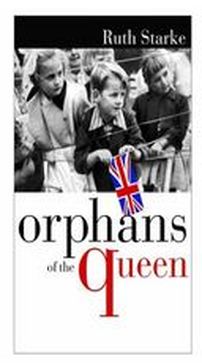
Title: Orphans of the QueenBookID: orphansqueen-ficAuthors: Ruth StarkeISBN-10(13): 0734405286Publisher: Lothian BooksPublication date: July 1, 2003Edition: 1stLanguage: EnglishPrice: Varies
In Australia, the issue of the Aboriginal "stolen generation" who were removed from their parents and sent to church-run orphanages or adopted by white families has been an important part of the national agenda for some time. Less well-known, though it is coming to light now, is the fact that there was also a white "stolen generation:" British children brought to Australia in the 1950s and also placed in church institutions. They were mainly brought from British orphanages -- though some of them weren't actually orphans -- under the impression that Australia would be a better life for them, a chance to start afresh in a warm, pleasant country where they could go live on farms, be well fed and, hopefully, be adopted. Instead, they often found themselves in the care of brothers and nuns, siblings separated from each other and treated harshly, even abused. Some were trained as domestic servants. All these facts are gradually being revealed as the victims are testifying against those who abused them. No doubt the intentions were benign, but we all know what's paved with good intentions.
Orphans of The Queen is fiction, but what happens to the children in the story isn't. It's just an example of the sort of things that did happen. The author's afterword says that not much is invented. Being a novel, of course, it has to have at least one event that probably wouldn't happen. In this case, it's the heroine's encounter with the young Elizabeth II (shades of the films The Mudlark and The Little Princess ?). It does help to make this a good story, though.
In 1952, Hilly Lyon and her young brother Gregory (Egg) are brought to Australia by ship, along with other children from their orphanage, believing that they will be adopted out, live on farms and pluck fruit straight from the trees. After postwar Britain, with its cold climate and rationing, it seems like heaven. By the time they reach Fremantle in Western Australia -- their first stop -- Hilly realizes they have been lied to: Egg is taken away with the other boys. Hilly has no idea where he has gone and is told not to ask questions. The orphanage in Adelaide is the next shock. It is run by nuns whose discipline is harsh, who take away all the children's personal possessions, including clothes and beloved toys and make them work most of the day, only giving them a minor, grudging education. Government money meant to be spent on the children is held back from them.
Hilly has always been a well-behaved girl who refuses to break the rules, but she comes to realize that sometimes rules need breaking and a little rebellion is good for the soul. Her new friend, Meggie, helps her and, after she has gained the respect of the other girls, they all aid in her efforts to find out what has happened to her brother. The Queen is head of the Commonwealth, isn't she? Why not go straight to the top? Hilly writes a letter, which she manages to smuggle out. There's a reply, but when nothing further has happened and the Queen is going to tour Australia, Hilly realizes that something more needs doing and, with the help of her friends, does it.
Ruth Starke is a fine writer. She makes you want to weep for these children, but at the same time, the novel is not short of humor, such as when a night raid to recover locked-up toys results in a nun thinking she's seeing a vision. Australia in the 1950s is well-described. The characters are likable and believable. The ending is happy but believable. It doesn't end with Hilly and her brother reunited, but she knows where he is and that she can eventually find him again.
In Australia, the issue of the Aboriginal "stolen generation" who were removed from their parents and sent to church-run orphanages or adopted by white families has been an important part of the national agenda for some time. Less well-known, though it is coming to light now, is the fact that there was also a white "stolen generation:" British children brought to Australia in the 1950s and also placed in church institutions. They were mainly brought from British orphanages -- though some of them weren't actually orphans -- under the impression that Australia would be a better life for them, a chance to start afresh in a warm, pleasant country where they could go live on farms, be well fed and, hopefully, be adopted. Instead, they often found themselves in the care of brothers and nuns, siblings separated from each other and treated harshly, even abused. Some were trained as domestic servants. All these facts are gradually being revealed as the victims are testifying against those who abused them. No doubt the intentions were benign, but we all know what's paved with good intentions.
Orphans of The Queen is fiction, but what happens to the children in the story isn't. It's just an example of the sort of things that did happen. The author's afterword says that not much is invented. Being a novel, of course, it has to have at least one event that probably wouldn't happen. In this case, it's the heroine's encounter with the young Elizabeth II (shades of the films The Mudlark and The Little Princess ?). It does help to make this a good story, though.
In 1952, Hilly Lyon and her young brother Gregory (Egg) are brought to Australia by ship, along with other children from their orphanage, believing that they will be adopted out, live on farms and pluck fruit straight from the trees. After postwar Britain, with its cold climate and rationing, it seems like heaven. By the time they reach Fremantle in Western Australia -- their first stop -- Hilly realizes they have been lied to: Egg is taken away with the other boys. Hilly has no idea where he has gone and is told not to ask questions. The orphanage in Adelaide is the next shock. It is run by nuns whose discipline is harsh, who take away all the children's personal possessions, including clothes and beloved toys and make them work most of the day, only giving them a minor, grudging education. Government money meant to be spent on the children is held back from them.
Hilly has always been a well-behaved girl who refuses to break the rules, but she comes to realize that sometimes rules need breaking and a little rebellion is good for the soul. Her new friend, Meggie, helps her and, after she has gained the respect of the other girls, they all aid in her efforts to find out what has happened to her brother. The Queen is head of the Commonwealth, isn't she? Why not go straight to the top? Hilly writes a letter, which she manages to smuggle out. There's a reply, but when nothing further has happened and the Queen is going to tour Australia, Hilly realizes that something more needs doing and, with the help of her friends, does it.
Ruth Starke is a fine writer. She makes you want to weep for these children, but at the same time, the novel is not short of humor, such as when a night raid to recover locked-up toys results in a nun thinking she's seeing a vision. Australia in the 1950s is well-described. The characters are likable and believable. The ending is happy but believable. It doesn't end with Hilly and her brother reunited, but she knows where he is and that she can eventually find him again.
|
|
Promise Song
Title: Promise SongBookID: promise-ficAuthors: Linda HolemanISBN-10(13): 978-0-88776-387-8Publisher: Tundra BooksPublication date: March 1997Edition: 1stLanguage: EnglishPrice: $9.95 US
Grades 6-9. Linda Holeman's offering is full of the suffering and hard work of frontier life. Rosetta and her sister, Flora, once lived lives of ease, but the death of their parents has left them in an English orphanage. Sent to Canada, the girls anticipate being adopted by a loving family, but the younger Flora is rapidly grabbed up, and the older girl is sent to an isolated farm. Albert and Runa need Rosetta's labor and make it clear that she is under contract to earn her keep. Runa is suffering from the deaths of her babies, and while Albert's gruffness and cold heart never disappear, readers do get glimpses of a softness and humanity that he himself thinks of as weakness. A harrowing depiction of an attack on Rosetta's virtue by a hired hand may cause concern, but the author carefully makes the threat obvious without graphically depicting it, and Rosetta is able to protect herself and escape. This one will bring tears to your eyes. |
Scarlet Ribbons
Sadie Smith can't believe her luck when she is told that soon she will be like all other children and her mother buys her a pair of scarlet ribbons. For Sadie, born with a degenerative hip, is unable to walk. When she arrives at Babies Castle, a Dr Barnardo's home, she is so excited that she fails to realize she will never see her beloved family again.
In 1927, once fully cured, Sadie is offered the opportunity of a lifetime: to start a new life in Canada. But when she arrives at the Trikhardts' farm in the heart of Ontario, her new life seems far from perfect. Worked from dawn to dusk, she treasures her scarlet ribbons and seeks solace in her friendship with fellow orphan, cheeky-faced Robbie. A freak hurricane finally provides Sadie with a lucky escape. From Canadian parlourmaid to pilot in Britain's Air Transport Auxiliary, from office clerk to managing director, Sadie has to draw on all her courage and strength in her determined struggle to find the lasting happiness that has always eluded her as a child. |
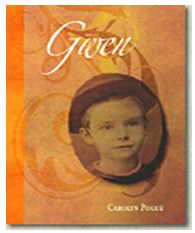
No matter what the world throws at her, Gwen Peters rises to the challenge. Feisty, curious, with a flare for the dramatic, she dreams of a life on the stage like her idol E. Pauline Johnson, a Mohawk writer, poet and performer who dazzled Gwen during a stunning performance at a London theatre. When Gwen is orphaned at the age of eleven, she seizes the opportunity to become a Home Child and is trained to work as a maid for placement with a family in Canada. So begins her long journey away from her friends in the turn-of-the-century streets of London, England to begin service in a wealthy Canadian household.
But when trouble comes her way in Toronto, Gwen takes matters into her own hands and escapes into the night. Angry and alone, she undertakes a long dangerous trek following the train tracks back to the only safe haven she knows: Cedarbrae, the Home in Peterborough. Her many adventures include an encounter with a bear and flight from a raging forest fire. Finally, Gwen's courage brings her to a welcoming family in Brantford and new friends from the Six Nations Reserve near Pauline Johnson's childhood home. Author Carolyn Pogue draws imaginatively on the story of her own grandmother's experiences as a Barnardo Home Child to bring a little-known piece of Canadian history to light in this exuberant story of bravery and resourcefulness. With the young, vibrant Gwen, Pogue gives readers of all ages a character to cheer on through every step of a journey that comes alive in a manner both wonderfully strange and familiar.
But when trouble comes her way in Toronto, Gwen takes matters into her own hands and escapes into the night. Angry and alone, she undertakes a long dangerous trek following the train tracks back to the only safe haven she knows: Cedarbrae, the Home in Peterborough. Her many adventures include an encounter with a bear and flight from a raging forest fire. Finally, Gwen's courage brings her to a welcoming family in Brantford and new friends from the Six Nations Reserve near Pauline Johnson's childhood home. Author Carolyn Pogue draws imaginatively on the story of her own grandmother's experiences as a Barnardo Home Child to bring a little-known piece of Canadian history to light in this exuberant story of bravery and resourcefulness. With the young, vibrant Gwen, Pogue gives readers of all ages a character to cheer on through every step of a journey that comes alive in a manner both wonderfully strange and familiar.
Author's web site:
http://www.carolynpogue.ca/
The Street Arab by Sandra Joyce
Belonging by Sandra Joyce
Belonging by Sandra Joyce
